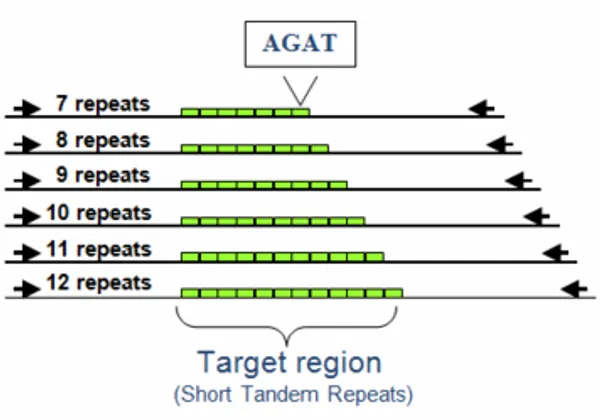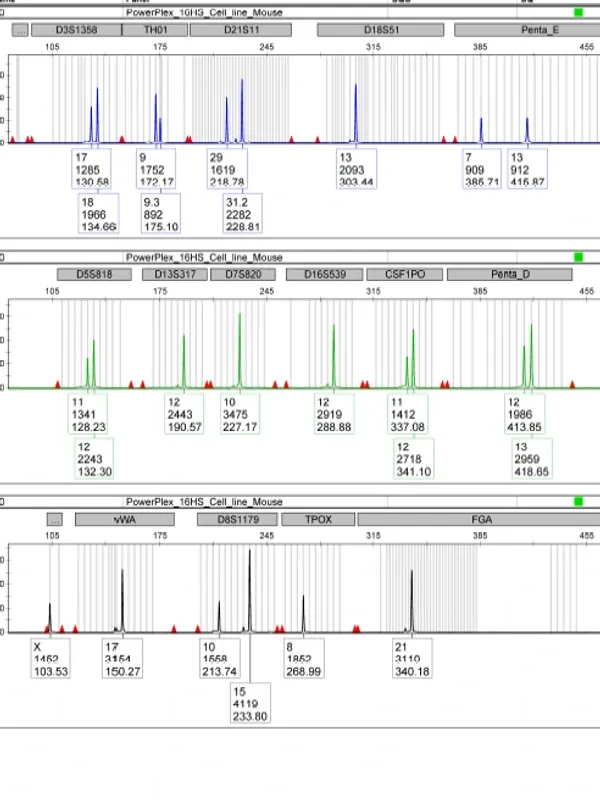What is human STR DNA profiling?
All humans inherit half of their genome from their biological mother (22 autosomal chromosomes plus one sex chromosome) and the other half from their biological father (22 autosomal chromosomes plus one sex chromosome). Thus, there are two copies (or two alleles) of each gene in our genome. Short tandem repeats (STRs) are repeated segments of DNA that are typically 2-6 base pairs in length. These STRs are scattered throughout our genome. At each of the tested genetic sites, one STR allele comes from the mother and the other STR allele comes from the father. The number of repeats of each STR at each genetic site varies within the human populations, and this variability in the number of repeats makes STR DNA testing extremely valuable as a human DNA identification tool.
A few of the possible STR alleles present at the genetic site called CSF1PO, located at position 5q33.3-34 on chromosome 5, are depicted in the example to the right. The repeating nucleotide sequence is "AGAT". It is the number of repeats of "AGAT" at CSF1PO that varies from person to person on each inherited chromosome. As an example, an individual may receive a "7" repeat segment from their biological mother and an "11" from their biological father, so at CSF1PO, this person's STR DNA profile is "7,11".


Advantages
- Uniquely identifies human cell lines down to the individual level (except for identical twins) without revealing invasive medical information like other forms of human identification
- Relatively inexpensive
- Quick turnaround time with results typically available in 2-3 business days
- Commercial availability of amplification kits
- Format is suitable for use in a universal reference database
- Highly sensitive method for detecting cross-contamination between human cell lines (as low as 5% intra-species contamination)
- Evaluates STR DNA profile consistency between low and high passage number of same cell line
- ANSI/ATCC ASN-0002 Standard details the use of STR profiling for the purpose of Cell Line Authentication testing
Challenges
- Primers are species specific; therefore, STR DNA profiling alone cannot detect inter-species contamination
- Cannot discriminate between cells derived from different tissues of the same donor (or identical twins)


